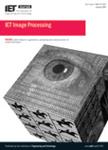版权所有:内蒙古大学图书馆 技术提供:维普资讯• 智图
内蒙古自治区呼和浩特市赛罕区大学西街235号 邮编: 010021

作者机构:Sun Yat Sen Univ Sch Comp Sci & Engn Guangzhou Peoples R China Guangdong Univ Foreign Studies Guangzhou Peoples R China South China Normal Univ Sch Comp Sci Guangzhou Peoples R China Guilin Univ Elect Technol Natl & Local Joint Engn Res Ctr Satellite Nav & L Guilin Peoples R China
出 版 物:《IET IMAGE PROCESSING》 (IET Image Proc.)
年 卷 期:2022年第16卷第13期
页 面:3617-3633页
核心收录:
学科分类:0808[工学-电气工程] 1002[医学-临床医学] 08[工学] 0812[工学-计算机科学与技术(可授工学、理学学位)]
基 金:National Natural Science Foundation of China [U1711266] Guangzhou Scientific and Technological Plan Guangdong Basic and Applied Basic Research Foundation [2019A1515011078]
主 题:clinical medicine guided filters low segmentation accuracy convolutional neural nets retinal images clinical diagnosis testing samples feature extraction segmentation performance image segmentation utilising training samples test-time augmentation method blood vessels retinal image segmentation curvelet enhancing few-sample training set medical image processing signal analysis eye biomedical optical imaging improved model IterNet offline hard-sample mining image classification vessel segmentation
摘 要:In clinical medicine, the segmentation of blood vessels in retinal images is essential for subsequent analysis in clinical diagnosis. However, retinal images are often noisy and their vascular structure is relatively tiny, which poses significant challenges for vessel segmentation. To improve the performance of vessel segmentation, an improved model IterNet++ based on the architecture of IterNet is proposed. First, curvelet signal analysis is applied to enhance retinal images. Second, residual convolution (ResConv) blocks and guided filters are introduced to utilise the encoder features of previous iterations in the model to reduce overfitting. Third, offline hard-sample mining is used to improve segmentation performance by utilising training samples with low segmentation accuracy as many possible on a few-sample training set. In addition, a test-time augmentation method is applied to testing samples in test dataset during inference. Extensive experiments show that this model achieves Dice scores of 0.8313, 0.8277, and 0.8372 on DRIVE, CHASE-DB1, and STARE datasets, respectively, demonstrating the best performance compared with IterNet and other baseline models.